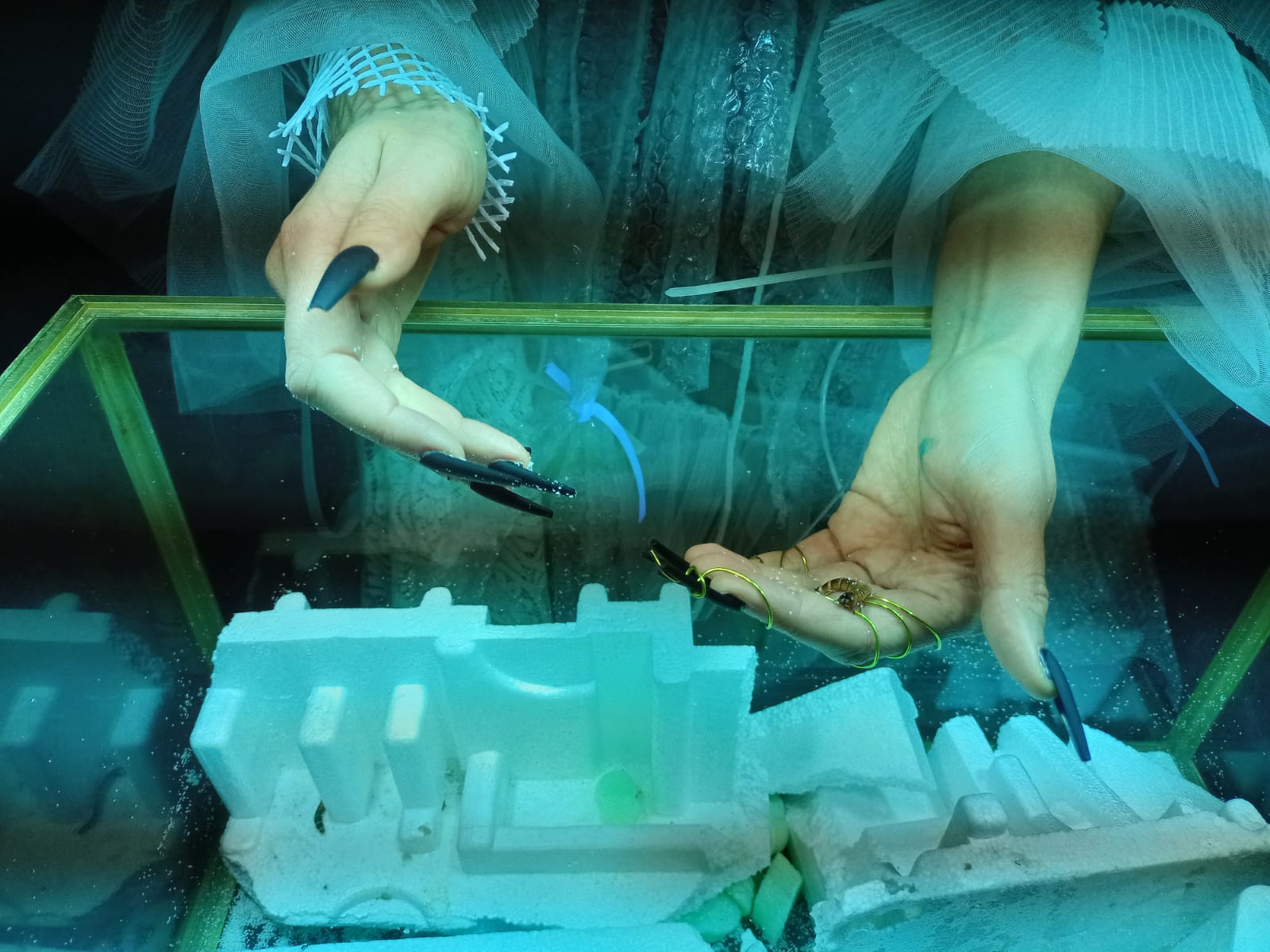︎︎︎
Zophobas morio are remarkably qualified to digest and metabolize polystyrene. As a form of assisted evolution, the artist wanted to introduce the powerful microbiome of the Zophobas larvae into her own gut. Similar to other mammals who share their gut microbiome with their offspring by offering them their fecal matter for consumption, the artist decided to feed on the wormshit for one entire month in preparation for the main performance during the Toxic Temple at Donaufestival 2023. She produced (through tedious separation of styrofoam dust and fecal matter) and ate one wormshit-pill per day for 30 days. During the Toxic Temple Mess, she then performed a ritualistic styrofoam eating together with the Apostels.


As this performance piece is still quite recent, proper documentation is yet to be uploaded. In the meantime, you might want to read the fascinating study which inspired this work. Abstract and DOI below.
Title:
Insights into plastic biodegradation: community composition
and functional capabilities of the superworm (Zophobas morio)
microbiome in styrofoam feeding trials
Jiarui Sun, Apoorva Prabhu, Samuel T. N. Aroney and Christian Rinke*
RESEARCH ARTICLE
Sun et al., Microbial Genomics 2022;8:000842
DOI 10.1099/mgen.0.000842
Abstract
Plastics are inexpensive and widely used organic polymers, but their high durability hinders biodegradation. Polystyrene, including extruded polystyrene (also known as styrofoam), is among the most commonly produced plastics worldwide and is recalcitrant to microbial degradation. In this study, we assessed changes in the gut microbiome of superworms (Zophobas morio) reared on bran, polystyrene or under starvation conditions over a 3 weeks period. Superworms on all diets were able to complete their life cycle to pupae and imago, although superworms reared on polystyrene had minimal weight gains, resulting in lower pupation rates compared to bran reared worms. The change in microbial gut communities from baseline differed considerably between diet groups, with polystyrene and starvation groups characterized by a loss of microbial diversity and the presence of opportunistic pathogens. Inferred microbial functions enriched in the polystyrene group included transposon movements, membrane restructuring and adaptations to oxidative stress. We detected several encoded enzymes with reported polystyrene and styrene degradation abilities, supporting previous reports of polystyrene-degrading bacteria in the superworm gut. By recovering metagenome-assembled genomes (MAGs) we linked phylogeny and functions and identified genera including Pseudomonas, Rhodococcus and Corynebacterium that possess genes associated with polystyrene degradation. In conclusion, our results provide the first metagenomic insights into the metabolic pathways used by the gut microbiome of superworms to degrade polystyrene. Our results also confirm that superworms can survive on polystyrene feed, but this diet has considerable negative impacts on host gut microbiome diversity and health.